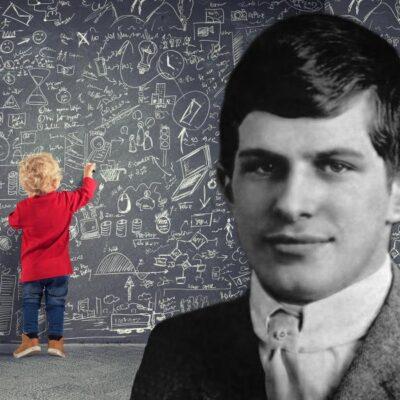
Everything in the universe is based on certain laws. One such law regarding black holes was discovered in 1971 by the British physicist Stephen Hawking. One prediction according to this theory is that the area of the event horizon of black holes will never decrease. Furthermore, the event horizon area of another black hole formed by the merging of two black holes is not less than the total area of the event horizons of the two black holes. This is referred to as Hawking’s area theory.
Hawking’s theory was confirmed 50 years later by a team of physicists led by Maximiliano Isi, a physicist at the Massachusetts Institute of Technology, who studied gravitational waves. The report on their study was published in the Physical Review Letters on July 1, 2021.

To explain the black holes and Hawking’s area theory, it is necessary to mention three important theories that emerged in physics in the last century. Those ones
Special Theory of Relativity (1905)
General Theory of Relativity (1915)
And quantum theory (1926).
One or both of these theories were developed by Albert Einstein. He was also the instigator of the third theory. The German physicist Max Planck discovered that the transmission of energy takes place in the form of quanta. Max Planck is therefore considered to be the inventor of quantum mechanics.
In connection with this idea, Einstein confirmed that light is transmitted in the form of photons. But the elements of uncertainty related to quantum mechanics made Einstein reluctant to be interested in this theory. His theory of general relativity was a mathematically more complex theory of classical physics. It was difficult to keep up with quantum mechanics. However, since the 1930s, there have been numerous studies on quantum mechanics. Quantum mechanics is a branch of science that is highly developed and has contributed to all the communication technologies we use today on a practical level.

Later discoveries in the early 1960s showed quasars emitting ten times the total luminosity of galaxies, neutron stars from the remnants of supernova explosions, and X-ray sources beyond the Solar System, suggesting that strong gravitational fields exist in the universe. This attracted physicists to studies related to the general theory of relativity.
The first X-ray source outside the Solar System was detected in 1962 by signals received from a rocket launched by the United States. Theories have been put forward that X-ray sources could be supermassive neutron stars or black holes many times more dense than them. However, the general theory of relativity of the macrocosm could not be reconciled with the quantum theory of the microcosm (atomic level).
According to the general theory of relativity, space and time combine to form a quadratic space called space-time. This space is not a flat surface. Instead it is a space distorted by matter and energy. Due to this distortion of space-time, light rays or other radiations flowing close to the sun can be detected as being slightly curved. In 1915, the year immediately following Einstein’s theory of general relativity, the German mathematician Karl Schwarzschild developed the mathematical concept of black holes from Einstein’s field equations.

Karl Schwarzschild
According to the general theory of relativity, nothing can travel faster than light, so nothing can come out of black holes. The boundary surface of such a black hole is called the event horizon. This is the tip where the light rays curve back and forth in a state where they cannot flow out. This is called the event horizon because it is the extent to which events become inaccessible to the observer.
In the early 1970s, studies of black holes led by Stephen Hawking, led by the American physicist James Max Bardeen and the Australian physicist Brandon Carter, found some similarities between their nature and the laws of thermodynamics. This later evolved into the black hole thermodynamics of black holes.
According to the second law of thermodynamics, the entropy, the measure of the irregularity of an object, never decreases. A similar theory was put forward by Stephen Hawking in 1971 regarding the black hole area theory of the event horizons of black holes.

In 1974, Hawking proposed that black holes have an entropy within their event horizon, and that they emit some radiation at a temperature commensurate with their surface gravity. These are called hawking radiations. This was initially not widely accepted by physicists as it was contrary to preconceived notions about black holes.
Hawking’s area theory of black holes was confirmed with the help of mathematics but could not be proved experimentally. Hawking’s area theory of black holes has now been confirmed by a study of the gravitational wave first discovered by the Laser Interferometer Gravitational Wave Observatory (LIGO) on September 14, 2015 and named GW 150914. As soon as LIGO first discovered gravitational waves in 2015, Stephen Hawking called one of the founders of LIGO, physicist Kip Thorne, to ask if his theory had been confirmed.
Later in 2019, Maximiliano EC, a physicist at the Cowley Institute of Astrophysics and Space Research at MIT, developed a new technology to analyze and study gravitational waves. According to it, studies have been carried out to divide the gravitational wave GW150914 during the fusion of black holes into pre- and post-fusion. Before the two black holes merged, their mass and spin were measured to calculate their event horizon. It was found that their total area was approximately 235,000 square kilometers. In the same way, by measuring the mass and angular velocity of the black hole after fusion, the event horizon area was calculated to be approximately 367,000 square kilometers. Accordingly, the event horizon area after the fusion of black holes has been found to be greater than the total area of their event horizons.

Thus, 50 years later, Hawking’s area theory has been proven by observation. Maximiliano EC, a scientist at MIT who led the observational study, commented that ‘there may be many similar black holes and other objects in the universe that follow the theories of Einstein and Hawking and deviate from them. Therefore, the current finding should be seen as just the beginning of a series of experiments to follow.




Recent Comments